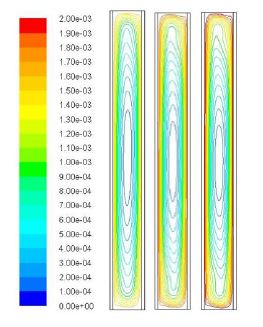
Numerical Investigation of the Effects of Window Height and Gas Thickness on Heat Transfer and Gas Flow in Double Pane Windows
Corresponding Author:
Prof. Dr. Sebahattin ÜNALAN
DOI Number https://doi.org/10.52924/ZMNV7482
Received: 05.05.202
Accepted 06.05.202
Published 11.07.202
Summary:
Double pane window is an effective way to reduce the heat loss from windows in buildings. There are many studies on the thermal performance of these window applications for different parameters such as optimum gap width, suitable filling fluid and different applications such as film coatings on panes to obtain different surface emissivity values or placing venetian blinds inside the gap, etc. These investigations are mostly based on the laminar flow assumption inside the gas gap between the two panes for the same window height. In this research, effect of the window height and gap width on the gas flow in the gap and heat transfer over double pane for three cities of Turkey representing different climates were numerically investigated with turbulent flow and ideal gas assumptions inside the gap for air and argon. In the calculations, natural convection for pane surface facing indoors and forced convection for pane surface facing outdoors was assumed as boundary condition. The numerical results shown that also the window height such as gap width has an effect on the heat transfer and gas flow of the double pane window. Thereby, the window height should be taken into consideration for determining the optimum gap width in the double pane window applications.
Graphical Abstract:
